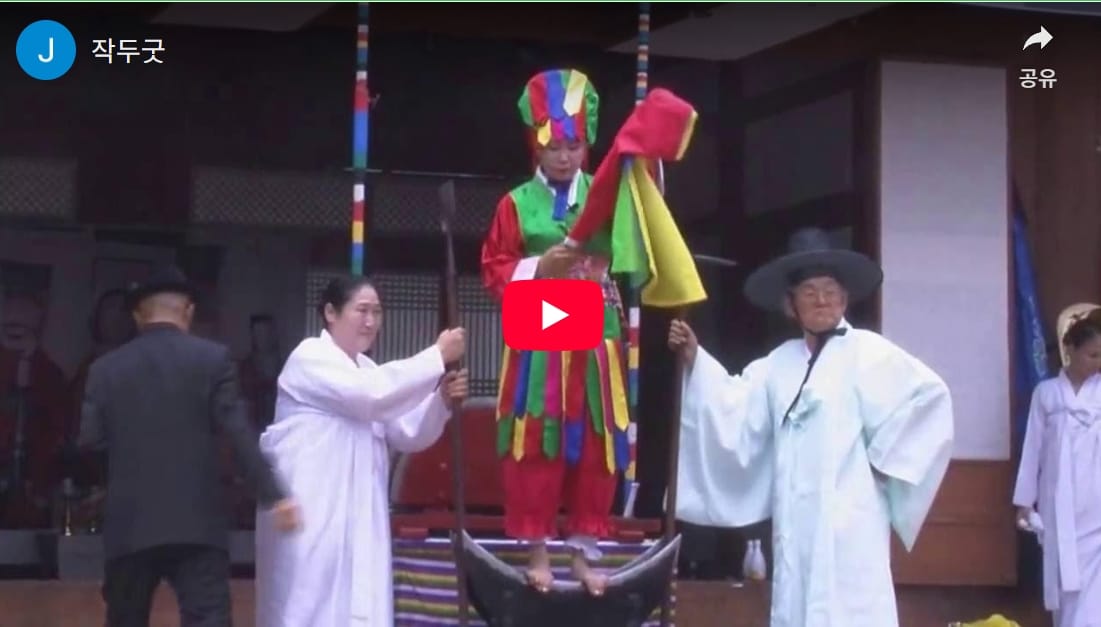K-pop Demon Hunters and Korean Shamanism: The Sacred Art of Blade Walking

Understanding the ancient tradition behind K-pop Demon Hunters
When K-pop Demon Hunters opens with a dramatic scene of a Korean shaman walking barefoot across razor-sharp blades, international viewers might think it's pure fiction. However, this striking imagery is rooted in centuries-old Korean spiritual traditions that continue to this day.
What is Korean Shamanism?
Korean shamanism, known as 무속 (musok), is one of Korea's oldest religious traditions, predating Buddhism and Confucianism by thousands of years. Unlike Western concepts of a single, omnipotent God, Korean shamanism involves a complex pantheon of spirits, ancestors, and deities called 신 (shin).
Mudang (무당) - Korean shamans - serve as bridges between the earthly and spiritual realms. They act as intermediaries, helping people communicate with spirits, ancestors, and various deities to solve problems, heal illnesses, and guide important life decisions.
The Sacred Art of Jakdu-tagi (작두타기)
What is Blade Walking?
Jakdu-tagi literally means "riding the blade." It involves a shaman walking or dancing barefoot on extremely sharp metal blades - often old farming tools called jakdu (작두) that were traditionally used to cut straw and other materials. These aren't props or trick blades; they are genuinely sharp enough to cause serious injury.
The Spiritual Significance
This isn't a circus act or entertainment - it's a profound spiritual ritual with deep meaning:
1. Divine Possession Test When spirits descend into a shaman (신내림, shin-naerim), they are believed to protect the shaman from harm. Walking on blades without injury is considered proof that genuine divine possession has occurred.
2. Authenticity Verification In Korean shamanic tradition, blade walking is one of the most definitive ways to distinguish authentic shamans from frauds. A fake shaman attempting this ritual would be seriously injured, while a true shaman guided by spirits remains unharmed.
3. Spiritual Power Demonstration The ritual showcases the shaman's connection to the spirit world and their ability to transcend normal human limitations through divine intervention.
The Reality of Modern Korean Shamanism
Still Practiced Today
Contrary to what some might assume, Korean shamanism isn't just historical. Thousands of practicing shamans operate throughout Korea today, offering spiritual guidance, healing rituals, and ceremonial services. Many Koreans, even in modern Seoul, consult shamans for major life decisions, business ventures, or family problems.
Cultural Significance
Korean shamanism has profoundly influenced Korean culture:
- Language: Many Korean expressions and idioms derive from shamanic beliefs
- Arts: Traditional Korean music, dance, and visual arts incorporate shamanic elements
- Psychology: The concept of han (한) - deep sorrow or resentment - is closely tied to shamanic worldviews
- Modern Media: Films, dramas, and music often reference shamanic themes
Why K-pop Demon Hunters Uses This Imagery
The creators of K-pop Demon Hunters likely chose to open with blade walking because:
- Visual Impact: It immediately establishes the supernatural elements of the story
- Cultural Authenticity: It grounds the fantasy in real Korean spiritual traditions
- Thematic Relevance: Shamans as demon hunters makes perfect sense in Korean cultural context
- Educational Value: It introduces international audiences to authentic Korean culture
Understanding the Difference: Shin vs. God
It's crucial to understand that Korean 신 (shin) doesn't translate directly to the Western concept of "God." Instead:
- Shin refers to various spirits, deities, and spiritual beings
- They can be ancestors, nature spirits, or guardian deities
- Multiple shin can exist simultaneously
- They interact with humans through shamans and rituals
- They're not necessarily all-powerful or all-knowing
The Broader Context
Shamanism Across Cultures
While Korean shamanism has unique characteristics, similar traditions exist worldwide:
- Siberian shamanism (where the word "shaman" originates)
- Native American medicine men and women
- African traditional healers
- South American curanderos
Modern Relevance
In our globalized world, ancient traditions like Korean shamanism offer:
- Alternative perspectives on spirituality and healing
- Cultural diversity and richness
- Historical continuity in rapidly changing societies
- Unique approaches to mental health and community support
Conclusion
When you see that opening scene in K-pop Demon Hunters, you're witnessing more than entertainment - you're seeing a window into one of humanity's oldest spiritual traditions. The blade-walking shaman represents thousands of years of Korean spiritual heritage, a living tradition that continues to provide meaning and guidance for many Koreans today.
Understanding these cultural roots enriches our appreciation not just of K-pop content, but of the depth and complexity of Korean society itself. It reminds us that behind the modern, high-tech image of Korea lies an ancient wisdom tradition that still shapes how many Koreans understand their world.
Have you encountered other examples of traditional Korean shamanism in modern media? Share your thoughts and experiences in the comments below.


